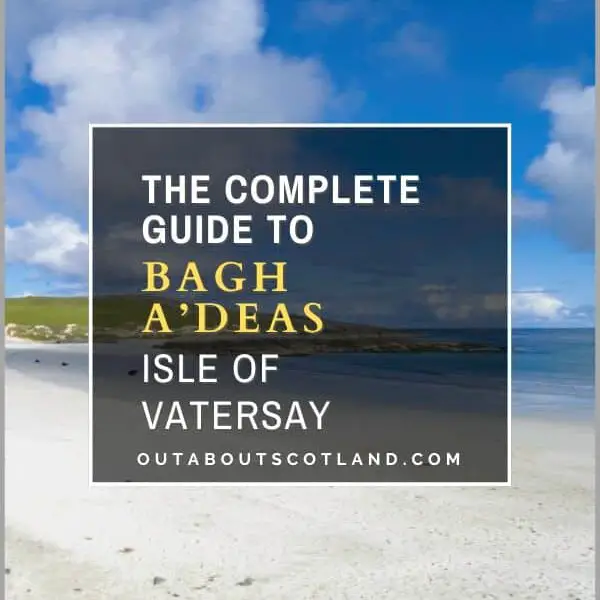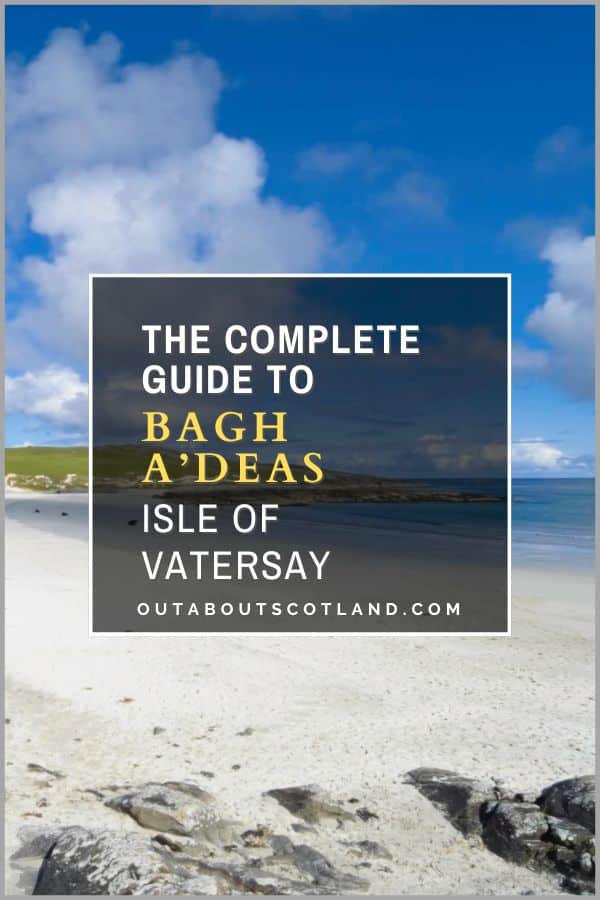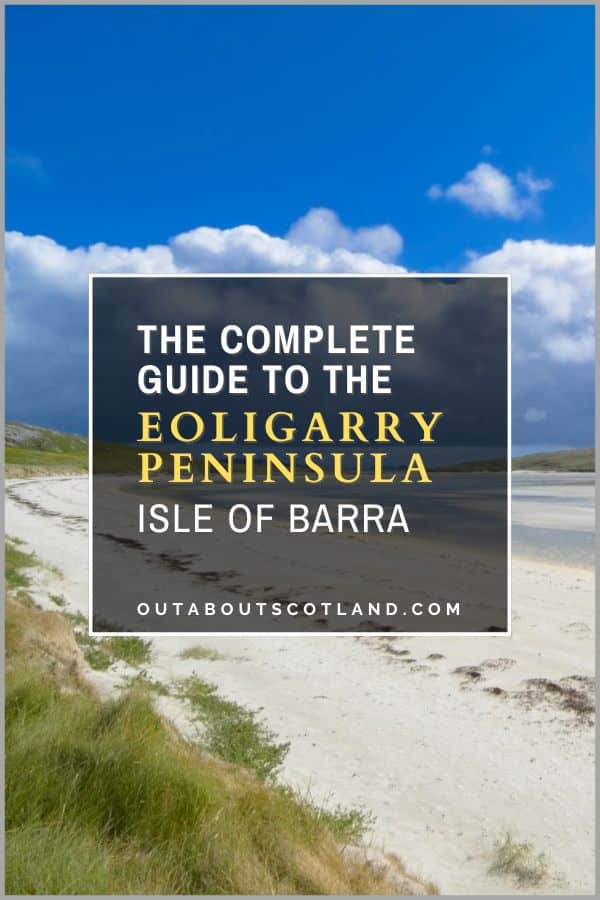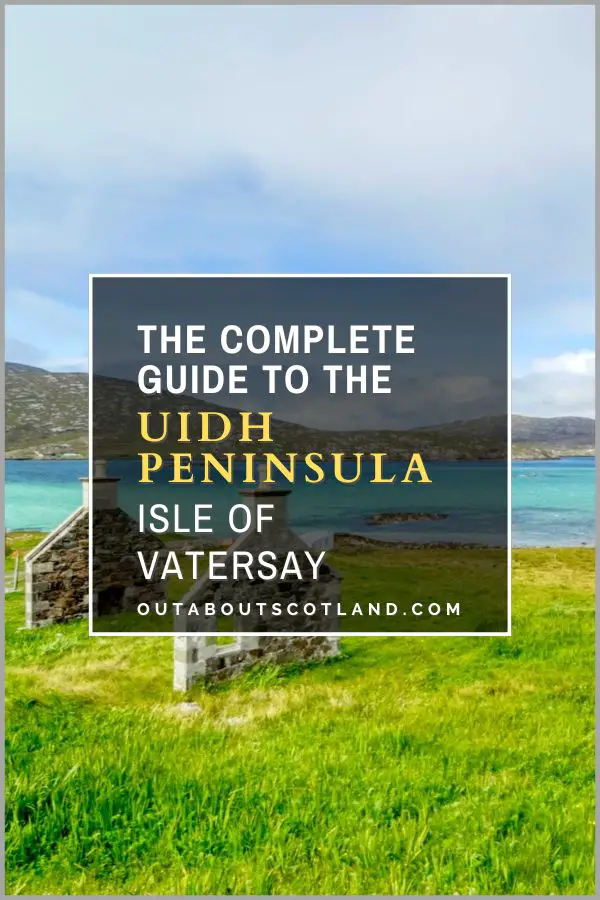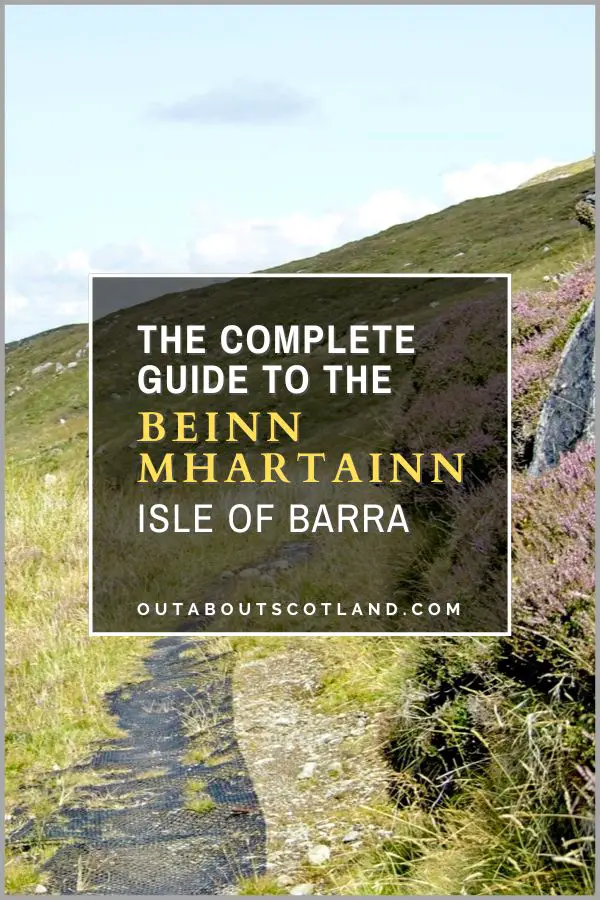Welcome to the Isle of Vatersay, the southernmost inhabited island in the Outer Hebrides and home to the breathtaking Bagh A’Deas bay and beach—a hidden gem located on the south-facing side of the island.
Bagh A’Deas, aptly named ‘South Bay’ in Scots Gaelic, is an emblem of natural beauty with pristine white sand, azure waters, and one of the finest views in the Western Isles. Whether you’re looking for a quiet day of sunbathing or simply a walk in peace and quiet, the bay and beach of Bagh A’Deas are a must-visit.
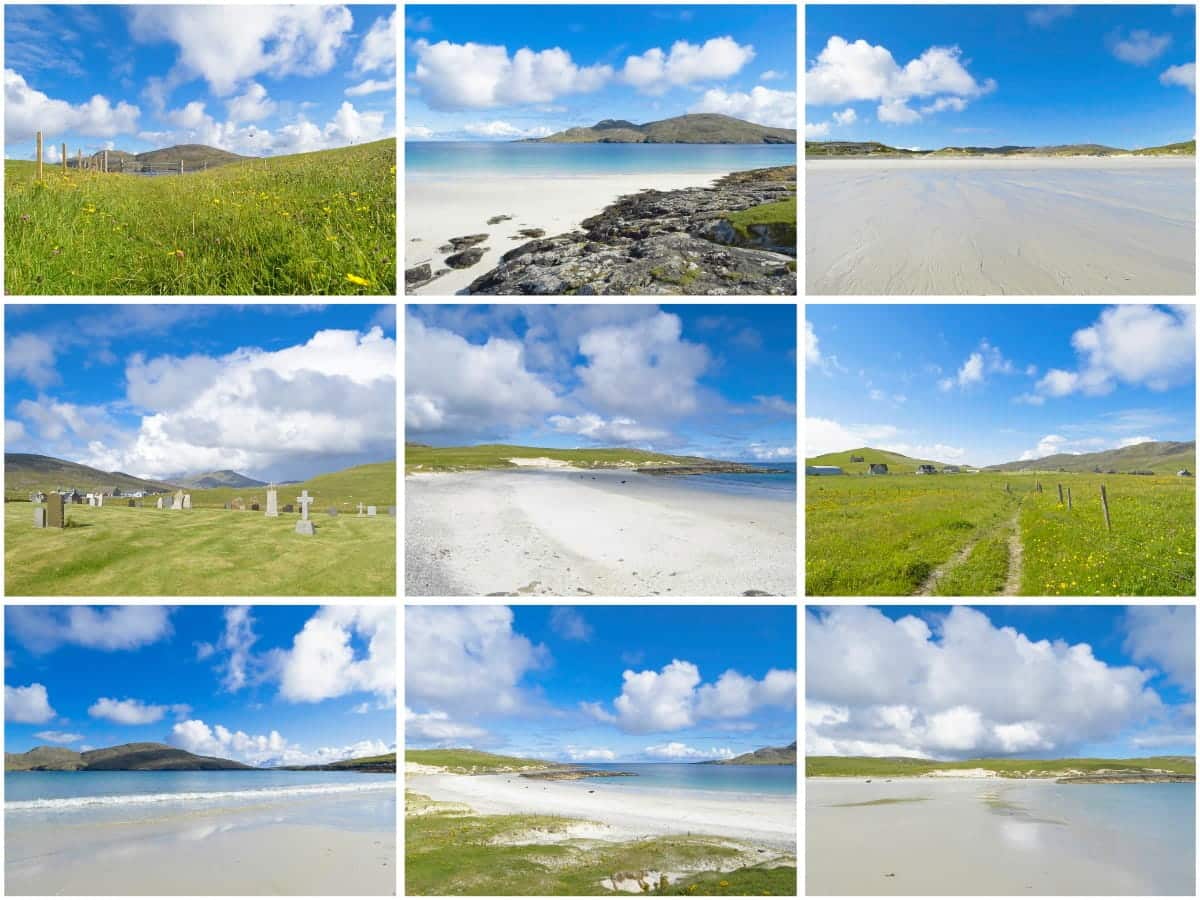
| Address: | Isle of Barra, HS9 5YW |
| Opening Hours: | Bagh A'Deas bay and beach is accessible 24/7, 365 days a year. |
| Admission Price: | NA |
| Parking: | Free public car parking areas near the Vatersay Hall Cafe and in vatersay village. |
| Contact: | NA |
| Facilities: | Cafe with toilets and shower facilities at the Vatersay Hall Cafe. |
| Photos: | Virtual Tour |
Overview
If you’re thinking of visiting the Outer Hebrides you probably have the big hitters in mind for your sightseeing itinerary, namely Harris, Lewis and the Uists. While those islands are undoubtedly beautiful, there’s a much smaller island at the southern end of the archipelago that is, in my opinion, even more scenic.
The Isle of Vatersay is the last inhabited island of the Western Isles, sitting between Barra on its northern side and the Bishop’s islands (comprising Sandary, Pabbay, Mingulay, and Berneray) on its southern side.
It’s not exactly the biggest island in Scotland at a mere 3 x 3.5 miles, but it packs a diverse landscape into its 960 hectares, with a stunning coastline bordering large swathes of machair, grazing pastures, hills, and a collection of beautiful white sand beaches.
Most people visiting Vatersay head to the community hall, which has become generally accepted as the start of the Hebridean Way, but if you want to say you’ve really completed the long-distance touring route end-to-end, you might like to head one mile south to mark the start of the journey at Bagh A’Deas instead.
Due to its stunning stretch of immaculate white sand and shallow turquoise waters that face the gentle hills of the Isle of Sandray, this bay is a true hidden gem. All around it are fields of wild grasses and flowers, and the only sounds you’re likely to hear are from the cows that tend to congregate on the beach throughout the day.
To get to Bagh A’Deas, simply point yourself in the direction of the community hall on Vatersay and continue down the road for one mile till you get to Vatersay village. The road forks east to west at this point, so take the west turn (i.e., turn right) and continue for another 400 feet. At this point, you’ll see a farmhouse at the end of the road and a rough track heading into fields on the left-hand side.
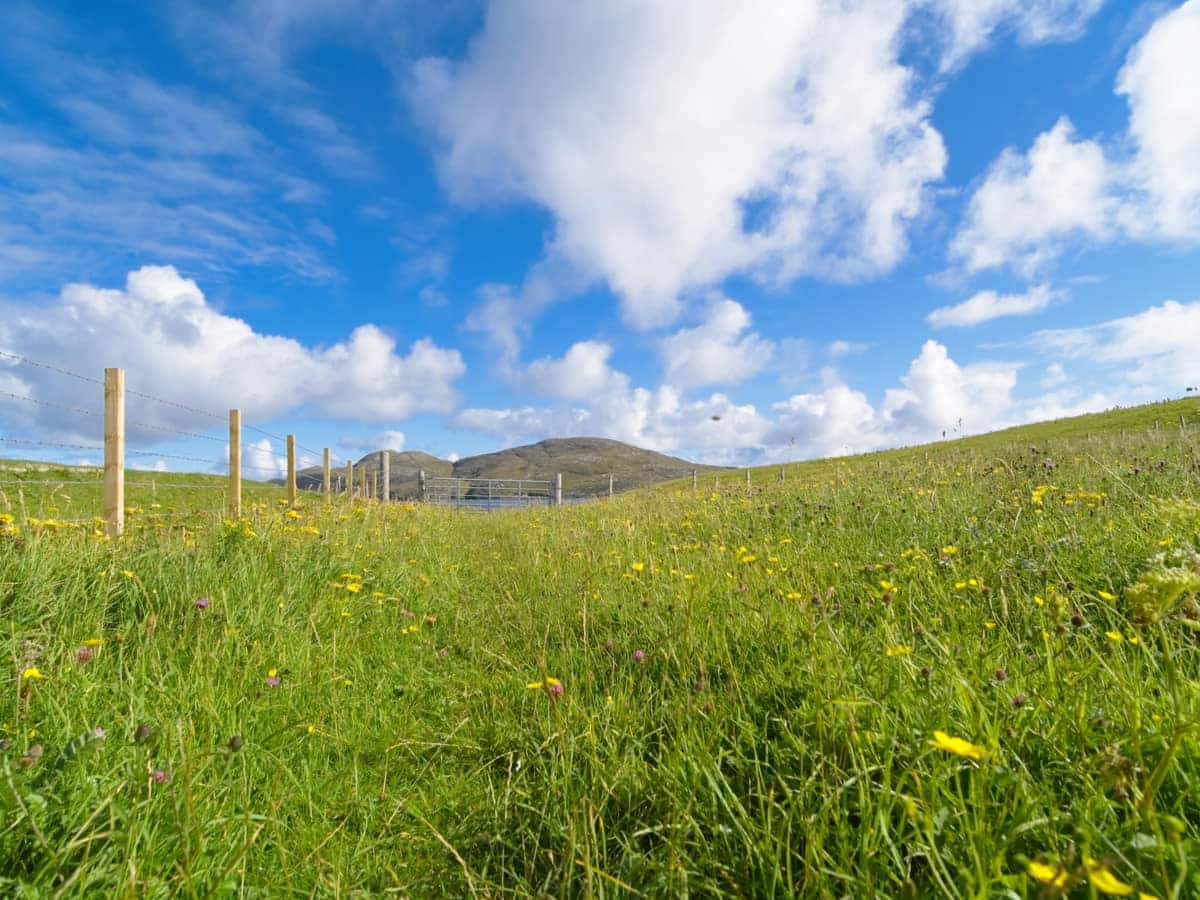
This track continues across fields past the Vatersay Cemetery for 1/3 mile before finally opening up to the beautiful expanse of Bagh A’Deas. Though the final stretch isn’t suitable for road bikes, it shouldn’t pose any issues for walkers or mountain bikes as the terrain is quite flat and firm underfoot, except for the beach itself, which is comprised of powder-soft sand.
This part of the island is incredibly quiet, and in fact, on my second visit, I didn’t see a single other person the entire time I was there—something that’s unheard of if you head back to either of the beaches near the community hall.
There are no facilities in the immediate area, so you’ll need to pack food and plenty of water for an all-day visit unless you’re prepared to head back to the Vatersay cafe, where you can order a takeout, or if you just fancy a cake or two, you’ll find an honesty box in Vatersay village, which has lots of home-baked goodies inside.
With regards to things to do at Bagh A’Deas, the most obvious activities are sitting on the beach and getting out into the open water, though the latter is not recommended unless you have a boat as the waters are renowned for their strong currents. That being said, it’s a very shallow beach, so if you stay close to the shore, you shouldn’t have any problems at all.
If you ever feel the need for a break from the beach, I recommend setting off on foot across the hills on the east side of the bay for half a mile till you get to the remains of an abandoned village, Eòrasdail, which was built by the ‘Vatersay Raiders‘ in 1906.
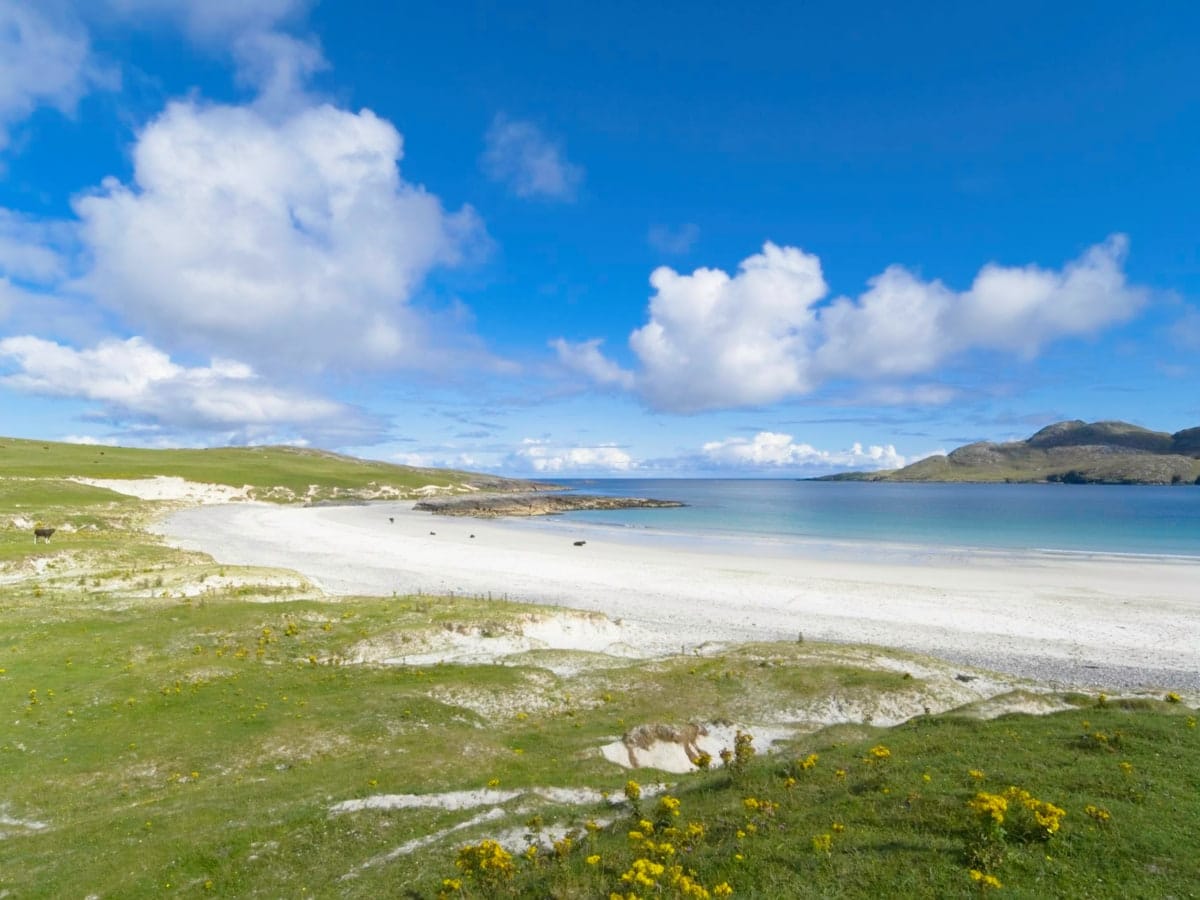
Walking Route
Though it now only consists of a few walls it’s a remarkably atmospheric place and the walk to it from Bagh A’Deas is a must-do on a sunny day, although it shouldn’t take much more than an hour in total to complete.
If you’d prefer a longer walk you might like to follow the Vatersay beaches trail which takes in the sights of Traigh Shiar and Traigh a Bhaigh as well as Bagh A’Deas:
- Begin your journey from the community hall and continue down Traigh Shiar. As you reach the end of the beach, continue past the fishing jetty and head east up the hill.
- There’s a standing stone at the peak. The trail then heads inland, eventually arriving at the south coastline of Vatersay near Bagh a Deas.
- To reach the Eorasdail ruins, keep walking west.
- Take the time to enjoy two other beaches that are close to the remains of Eòrasdail, then continue west to Bagh A’Deas.
- From the beach, head north past the cemetery to Vatersay village.
- Once out of the village, cross the dunes on your left and continue north along Traigh a Bhaigh.
- Go through the gate at the end of the beach and through the meadow to get back to the road not far from the Vatersay Hall Café.
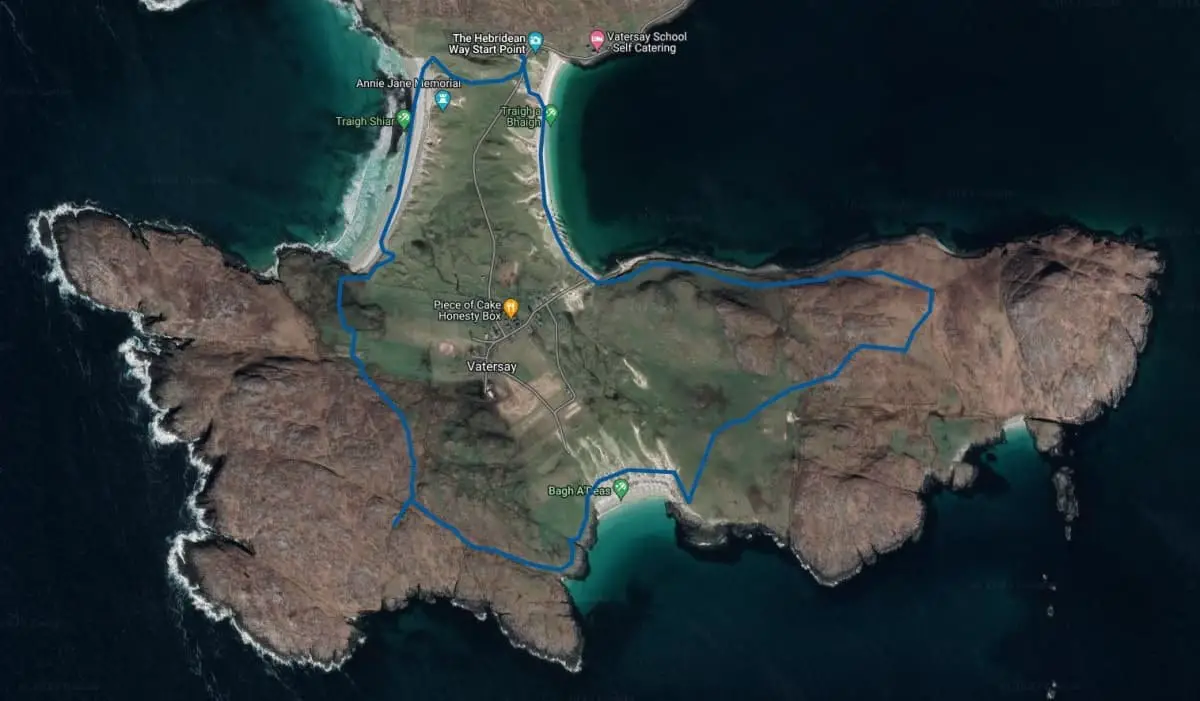
The Highlights
1: A’Deas on the Isle of Vatersay is a spectacle of untouched natural beauty, with its cerulean sea and white sand beach. It’s also the true southernmost point of the island, so if you’re thinking of completing the 185-mile Hebridean Way, it’s certainly worth making the extra effort to visit it.
2: The area is famed for its wildlife, making it a paradise for nature lovers. Sightings of seals, otters, and a variety of birds including puffins are commonplace. The bay is also an important breeding ground for many marine animals so visitors will have ample opportunities for wildlife spotting.
3: The southern half of Vatersay offers a network of hiking trails that lead visitors through dunes, machair (a unique Scottish habitat comprising wild grasses and flowers), and historic sites. The remains of the uninhabited village of Eòrasdail are a short walk from Bagh A’Deas, which offers a glimpse into the island’s past, while the Vatersay Beaches Trail will take you around the stunning Traigh a Bhaigh and Traigh Shiar beaches before circling back to Bagh A’Deas.
Visiting Tips
1: As inviting as the water is at Bagh A’Deas, it’s infamous for the strong currents that flow between the channel of Vatersay and Sandray. These currents can be very dangerous so it’s advisable to refrain from swimming at this particular beach and instead head to Traigh Shiar and Traigh a Bhaigh beaches instead.
2: Vatersay is a great place to spend a day but there are very few parking spaces other than at the Vatersay Hall Cafe (which serves delicious homemade cakes and sandwiches). As the cafe is the usual start of the Hebridean Way, it gets very busy in the peak season, so prepare to struggle to find a parking space unless you arrive early.
Alternative parking spaces can be found 1/3 mile from the cafe between the two beaches or head to Vatersay village, which has a few spaces near the junction.
3: Bagh A’Deas is a beautiful, pristine bay with a unique ecology that deserves to be protected, so please follow the ‘leave no trace’ principle – don’t litter, keep to the designated paths where possible, and don’t pick plants or disturb wildlife.
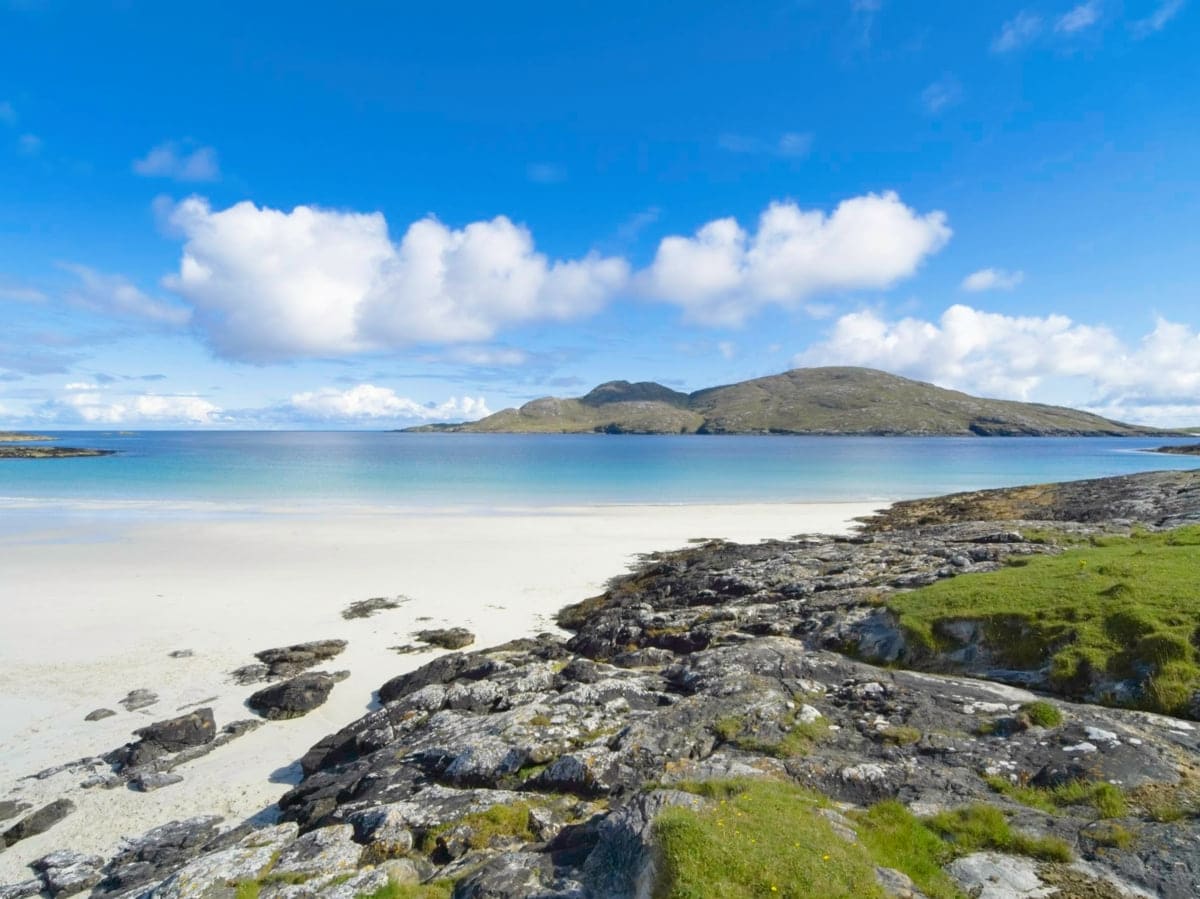
Things to Do
Hiking: The Isle of Vatersay is a walker’s paradise. There are a couple of trails leading from the beach that offer breathtaking views of the bay and the surrounding islands, but the best route is the Vatersay Beaches Trail, which starts at Traigh a Bhaigh beach and follows the coastline all the way past Bagh A’Deas to Traigh Shiar.
This 4.3-mile route is quite tough going in places but it’s a great way to experience the remotest parts of the island.
Wildlife Watching: Bagh A’Deas is a haven for seabirds so taking a pair of binoculars (link to binocular reviews) is a must-do. Visitors can spend hours bird watching, spotting terns, guillemots, and black-headed gulls as well as the occasional golden eagle soaring over Vatersay’s hills. The bay is also home to grey seals, which can often be seen lounging on the rocks, while the surrounding fields are awash with a variety of wildflowers.
Practice Photography: The natural beauty of Bagh A’Deas offers lots of opportunities for photography enthusiasts so if you’re looking for a good shot of one of Scotland’s famed Outer Hebridean beaches, it’s difficult to think of many places that are more scenic.
Water Sports: For those seeking a bit of adventure, Bagh A’Deas is a good place for kayaking and paddle boarding. The clear, sheltered waters of the bay make it an ideal location for boating but it’s not recommended for swimming due to strong currents. Be aware, however, that there are no roads leading directly to the beach, so you’ll have to carry any sporting equipment for at least 1/2 mile, depending on where you park the car.
Beach Picnic: With its white sand beach and clear turquoise waters, Bagh A’Deas is the perfect spot for a seaside picnic. Visitors can munch on snacks purchased from the Co-op in Castlebay or perhaps some sandwiches from the Vatersay Hall Cafe (a much more expensive option) and enjoy them while soaking up the sun, breathing in the fresh sea air, and listening to the waves rolling against the shore.
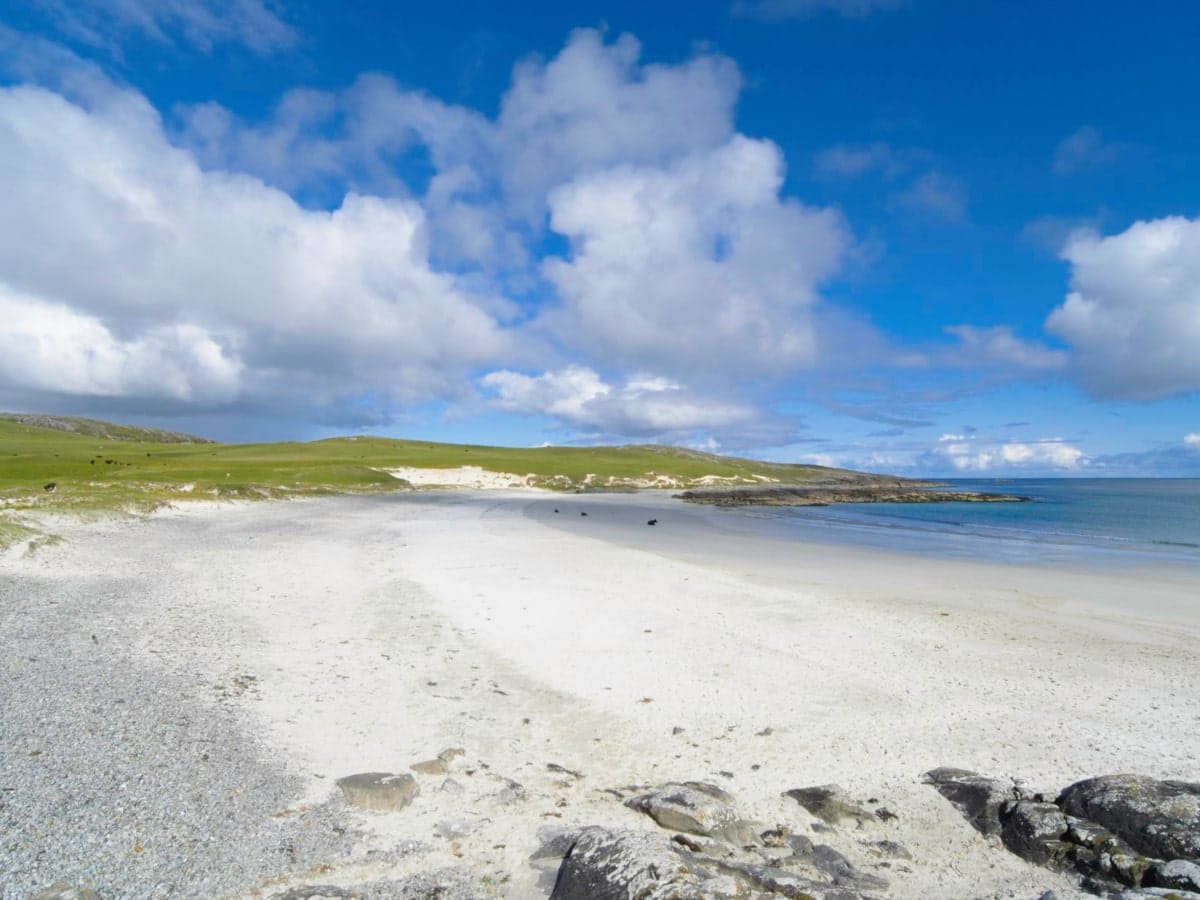
Things to Do Nearby
Uidh Peninsula. Address: Vatersay, HS9 5YU. Distance: 1.9 miles.
The Uidh Peninsula is the northernmost region of Vatersay that faces Castlebay and the island of Muldoanich. The peninsula sees far fewer tourists than the middle of the island, so it’s a better option for visitors looking for a quiet beach day.
There are two small beaches at the end of the single-track road running through the peninsula, but if you carry on around the northern coastline, you’ll find two smaller and even more secluded beaches.
Traigh Shiar and Traigh a Bhaigh beaches. Address: Vatersay, HS9 5YW. Distance: 0.75 miles.
These white-sand beaches in the middle of Vatersay are celebrated for their stunning views and turquoise waters. Both beaches are set within deep bays that offer protection from the sea, making them ideal locations for swimming and kayaking.
Vatersay Heritage Trail. Distance: starts 3 miles from the causeway.
A circular walking route that starts and ends at the Vatersay Hall cafe near Traigh Shiar and Traigh a Bhaigh. The approx 4-mile route runs along both beaches as well as the beach at Bagh A’Deas.
Hebridean Sea Tours. Email: info@hebrideanseatours.co.uk. Tel: 01871 817803.
This is the main tour boat operator in Castlebay which takes tourists south to the wildlife havens of Sandray, Pabbay, and Mingulay. These wild and uninhabited islands are regarded as having some of the finest coastal landscapes in Scotland, as well as being superb wildlife spotting sites.
Kisimul Castle. Address: Castlebay, Isle of Barra, HS9 5UZ. Distance: 2.5 miles from the causeway.
Kisimul Castle is located on a small island within the bay of Castlebay village. The castle is managed by Historic Environment Scotland which operates boat tours from the village jetty. Though closed at all times when HES tours aren’t running, it’s a good point of interest to land on for anyone kayaking around the bay.
Frequently Asked Questions
Is Vatersay inhabited?
Vatersay is the most southerly inhabited island in the Outer Hebrides and the most westerly inhabited island in Scotland.
There is a permanent population of around 90 residents who live in the main settlement in the middle of the island (also called Vatersay), as well as a few houses towards the north in a settlement called Caolas.
Are there shops on Vatersay?
There are no shops on Vatersay besides a cafe in the community hall. The nearest shops are located in Castlebay on Barra, approximately 2 miles from the Vatersay causeway.
Can you wild camp on Vatersay?
Wild camping is permitted on Vatersay, as it is in Scotland generally, as long as campers follow the Scottish Outdoor Access Code.
There are also paid designated camping areas for camper vans near the Vatersay Community Hall which allow occupants to use toilet and shower facilities.
How to get to Vatersay
Vatersay is accessed via a causeway on the northern end of the island, where it joins Barra.
The causeway is approximately 2 miles from the village of Castlebay, which has a ferry terminal with links to the Isles of Tiree and South Uist, as well as Oban on the mainland.
See the Calmac website for details on ferry sailing times.

